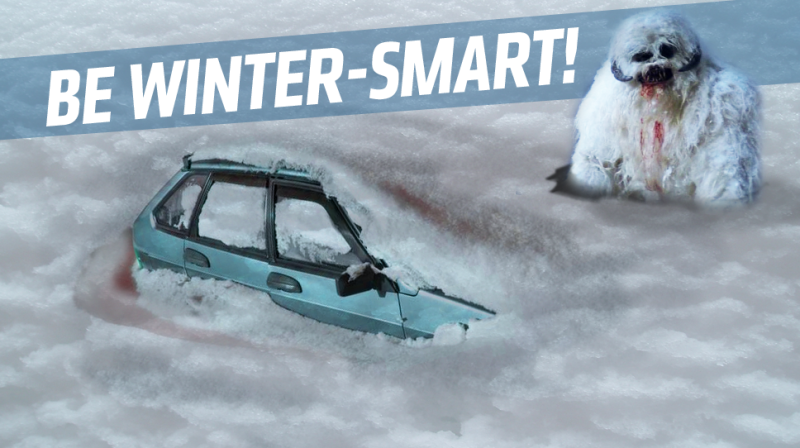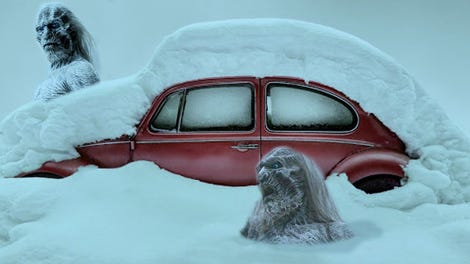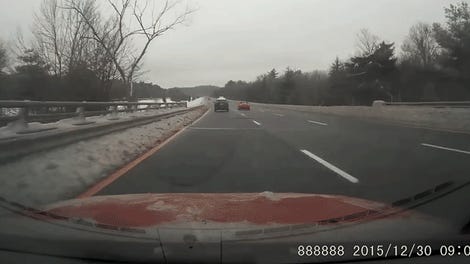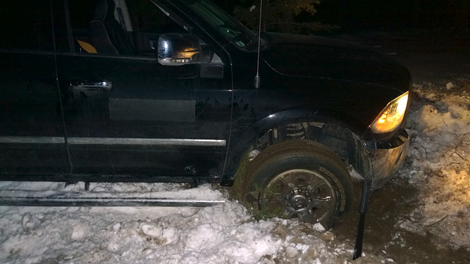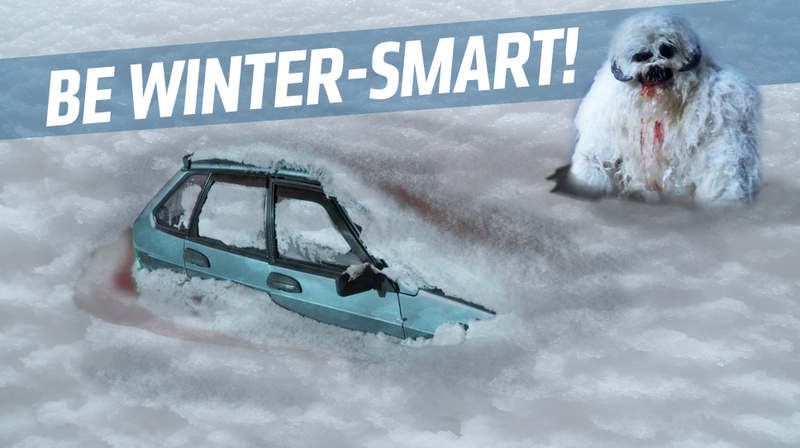
If you’re like me, you’ve noticed that the dew on your outdoor sleeping litter has been getting more and more frozen in the mornings, and your daily claims of hypothermia have been getting more and more accurate. That’s because winter is coming, and with the coming of winter comes every freaking car website publishing a freaking list of freaking winter driving tips. So let’s get this over with.
1. Keep your tires warm!
We all know what happens to your rubber sex toys when you leave them in the fridge: they get hard, brittle, and useless. Your tires are the same way. As the temperature drops, your tires become less able to flex and grip, which can cause huge issues with traction, handling and braking.
Advertisement
The only good solution is to keep your tires protected from the overnight cold-soak that comes with sitting outside in the weather. That’s why it’s so important to remove your wheels and tires and take them inside with you every night!
For best results, keep your tires in the bed with you while you sleep, letting your body heat help keep them supple and ready for the road. Mount the tires before your morning commute, and you’re off! It’s that easy!
2. Should you warm up your car?
This is actually a subject of significant debate in the automotive community. For older cars, I usually suggest warming up the car, but modern cars are much less likely to need this. The good news is that this argument doesn’t matter if you follow this simple bit of advice: every morning, drain all the oil from your car and replace it with a fresh pot of piping-hot soup. For best results, a soup with a thick, creamy broth, like a New England Clam Chowder, should be selected, though other soups like tomato bisque, French onion, and split pea work equally well. Think broths with many oil—passage obstructing elements, like Minestrone, should be avoided.
3. Should I mate with the Yetis I encounter as I’m driving?
If there’s any question I’m sick of answering every single winter, it’s this one. Yes, I’m well aware that the Yetis all come out in winter, and yes, I know you will undoubtedly encounter one or two over the course of your winter driving. And yes, I know how powerful the urge is to attempt to mate with an nine-foot-tall snow-white Yeti. I get it.
Advertisement
But you must resist! If you’re driving, and you see a Yeti, just let it pass. Every year hundreds or even thousands of wrecks are caused by people driving recklessly to get to a Yeti they want to mate with. More people are killed by the drive to get to a Yeti to mate with than even the physical damage the Yetis cause during the mating process. Don’t become a statistic! Have some restraint, and only attempt to mate with Yetis you see while on foot.
4. How do I know what wheels I should put tire/snow chains on?
If you’re planning on using tire or snow chains on your car to help you maintain traction, remember, they need to be placed on your car’s driven wheels.
Advertisement
Sponsored
If you’re not sure what wheels are driven wheels on your car—front, rear, or all—don’t trust your manual or the internet: there are just too many reasons for people to lie about this, and it’s entirely possible your car may have shifted its driven wheels in a Larmarkian-evolutionary attempt to adapt to its environment. and remember, the illegal business of convincing FWD people they have RWD or AWD cars is a $300 billion dollar business in the U.S. alone!
Luckily, there’s a simple test you can do:
Advertisement
• Get your car into a garage, and suspend an old sheet or tarp from the ceiling, above your car
• Gently flip your car onto its roof
• Apply generous amounts of ordinary housepaint to all four wheels
Advertisement
• Get in the car, start it up, and place it in gear. If your car uses a gravity-fed fuel system (like a Trabant) temporarily reverse gravity around your fuel tank
• Hit the accellerator for 15-30 seconds.
Advertisement
• Turn off the car and exit. Look up at the sheet; the driven wheels will have flung paint onto the sheet. If you see 2 splashes in front, it’s FWD, if over the rear, RWD, if all four, AWD or 4WD.
Easy!
5. How do I defend my car from the packs of ravenous ice weasels?
I really wish I could help you more. The sad truth is you can’t. You can avoid driving at night, when the ice weasels come out, but if you’re targeted by a full pack of hungry adult ice weasels, the best you can do is hope they dispatch you quickly.
6. Should I swap my headlights and taillights for winter like so many sites suggest?
This too is controversial, but I don’t believe this is necessary any longer. The original intent was that by placing the red-shining taillights on the front of your car and the white-shining headlights at the rear, you could circumvent any issues with traction by utilizing the photonic pushing power of the full-spectrum white light at the rear, while the longer-wavelength red light at front could act as a sort of ‘cold-plow.’
Advertisement
Recent studies have suggested that these benefits are dubious at best, and generally are far outweighed by the compound danger of not being able to see where you’re going and the many, many wrecks from the confusion this causes other drivers.
Okay! I hope this helps! You’re going to be seeing about a thousand billionteen posts about winter driving in the next month or two, so, you know, prepare yourself.

